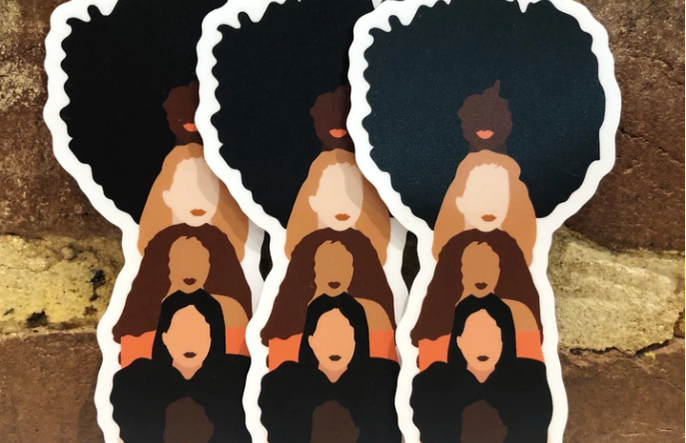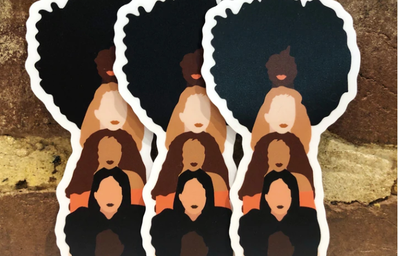We are taught from a very young age that there are many different colors; red, orange, blue, and a crayon box full of 64 shades, eight of which can be used to fill in the words that describe our own skin. Yet, still, some are hesitant to count all eight as being representative in essence of the modern country we proudly call “home.” Within these sparse eight, there lies a host of emotional depth that is left unseen for those who never chose to inquire beyond the cardboard lid of that box. Women of color, women like me, women with unique names, rich cultural identities, with a background that is tied to another nation that was once also called home, face this feeling. They feel as if being one of the eight is all that they are seen for, despite the revolutions around the globe that may tell them they live in a time that reflects otherwise.
Roots of Knowing
What I wish someone told me when I was a child, was that I will never feel as if I fit in entirely with my peers and mentors, and it would start with my name being different or pronounced differently than theirs. I have a name that is derived from Sanskrit, and it has many meanings, the one which I was named for means “delicate” and “beautiful.” While I know that my name is unique to me, it was something that caused me a lot of shame in my upbringing. I vividly remember many substitute teachers never even attempting to say my name in attendance, and always having to laugh at my name during any kind of introductory icebreaker as an obligatory means of acknowledging how different it was, how different I was. I felt anything but beautiful and delicate, almost burdensome, to be the cause of that pause in roll call simply because a grown educated adult would not even try to address my presence in a room full of my peers.
It is only now that I can recognize the impact that has had on my self-esteem. And I carried that with me, for a long time, making myself smaller to seem more acceptable to those around me, neglecting my individuality instead of celebrating it. I almost hated being colored. Had I had any other name, more conforming to the society I lived in, perhaps I never would have carried the magnitude of apprehension that has stayed sealed away within me. Such a simple thing, a pronunciation, was not the root cause of my self-doubt, but rather the notion that no one ever extended curiosity or compassion towards differentiation. That diversity, in its very definition, was a crumb of thought left under the rug, a thing to tack on to a college essay or a curriculum, but never a staple or a necessary subject on the minds of those around me. Today, I am proud of my name. It is mine, and it is heavy because, in it, I write the story of my life and upbringing in five clean letters that speak most to me.
The Cultural Balance Beam
Growing up in a society with traditions and customs that are different from my own has given me a broader perspective on the world as a whole. I feel that this is a common experience many people of color might identify with; each culture carries its own atmosphere composed of its netted beliefs and mindsets. It is interesting to see how each culture’s respective ideologies overlap or stack against the dominant American culture on various occasions. This observational gain allows me to better navigate aspects of both, but it can also lead to a large load of mental comprehension, specifically as a woman, when deciding which cultural values to uphold and which to dissect further. For example, in my Indian culture, it is appreciated when a woman is maternal, child-oriented, and openly loving. People prefer that girls and women be raised in a way that silently binds them to their homes, and not for any patriarchal reason, solely because families are more heavily emphasized as cohesive units in the Eastern world. In contrast, the Western world constantly encourages women to be more agentic, assertive, independent, and the idea of self-interest is highly associated with greater success in professional life. Hence, as a second-generation Indian I find my thoughts often counter each other when contemplating my own future, as I strive towards becoming a physician; am I selfish for pursuing a path that isolates me from my own growth as a family member and even as a woman who “should-be” starting her own family in her twenties?
The internal monologue continues further when I consider specific relational dynamics as a woman of color as well. It is commonly known that in the Eastern world, ageism doesn’t entirely exist; elders are valued and respected for their knowledge, especially by women, whereas here, I am not afraid to challenge my professors and my extended family when I disagree with their points. Does that make me a disrespectful woman or someone who values her own opinion over other supposedly misguided ones? Finding the very faint line between both cultures in these interactive situations and professionally directed pathways can prove to be exhausting. I feel as though it is vital for women in this position to find some kind of support in managing that fog of internal doubt or voice that questions their foundation when in such situations, for the sake of their own clarity and tranquility. For me, my outlet is the other colored women around me who describe the same phenomenon day after day. Simply put, steering through both halves of the world requires an additional mental load that is indescribable in its entirety and one that can perhaps only be respectfully described through stitched experiences.
Generational Guilt
Many women of color have some sort of origin story; mine was that my parents immigrated here, and my sister and I were both born and brought up here in the early 2000s. After many years I slowly realized the immense sacrifice my parents made to even settle in this country and establish roots for me and my sister, as we are in the present. Every non-direct generational immigrant always has some kind of amusing story to share when describing their parents, grandparents, etc. origin story, such as arriving at the airport with a single $100 bill and a tattered leather suitcase. But as amusing as these stories are, they also hold great significance to the descendants of their characters. My mother described to me how she barely had access to authentic healthcare as a woman of color when she first arrived in this country on short notice for my father’s employment in 1998. The stories she told me truly made me loathe the quality and approach to women’s health in general at that gray time period. She spoke about “period poverty” and how inaccessible healthcare and feminine products used to be for her generation of full-time working women, as well as how pregnant women or new mothers were quickly shunned from the growing corporate world, even more so if they had colored skin or unorthodox names.
Knowing this was my mother’s reality many years ago makes me feel this kind of “immigrant guilt” when I see that women my age have much easier access, for the most part, to healthcare and are more educated on women’s health and postpartum plans are in existence for those planning a family. The best way to describe this feeling is almost as if I am taking my surroundings for granted. This almost makes me overly aware of the abundance of opportunities available to me at present, propelling me to live my life a little more conservatively, in the sense that I want to preserve what I have because it once was never that way for generations of women in the past. Sometimes I feel guilty for having access to such a good education, for having my own car, and for doing so many other normal things for a woman my age to be doing, and the cause is simply an unspoken tax I pay as the daughter of immigrants. I recognize that this limits me, in many ways, as a woman, because it reinforces the false perception that as a woman of color, not all things should be accessible to me. It hinders my own progress because it silently creates a comparison between me and my mother, someone who struggled for me, at a different time, and hence, I feel the need to “repay” a debt to her generation, after accumulating an authentic understanding of her struggles, both cultural and professional.
An Evolved Cure
What truly has allowed me to lighten the weight of my “colored consciousness” is simply being more authentic; being myself. Being authentic to me means listening to my Hindi or Punjabi playlist almost as many times as I listen to Drake, unapologetically watching my Bollywood movies with no regard for how that might make me seem more alien or foreign, and most importantly, continuing to preserve some aspects of my culture and carry them into my daily life. I still don’t wear shoes in my house, have a holy basil plant in my bedroom, and will happily admit to believing in the evil eye. In all of this, I have come to find a happy medium for me to express my true identity as a woman of color in a way that empowers me, and never allows me to feel small in circumstances where my identity is attributed towards mere fractions of who I am; breaking that barrier every day, through small actions enables me to see that I am made of all 64 colors, and not just eight.


